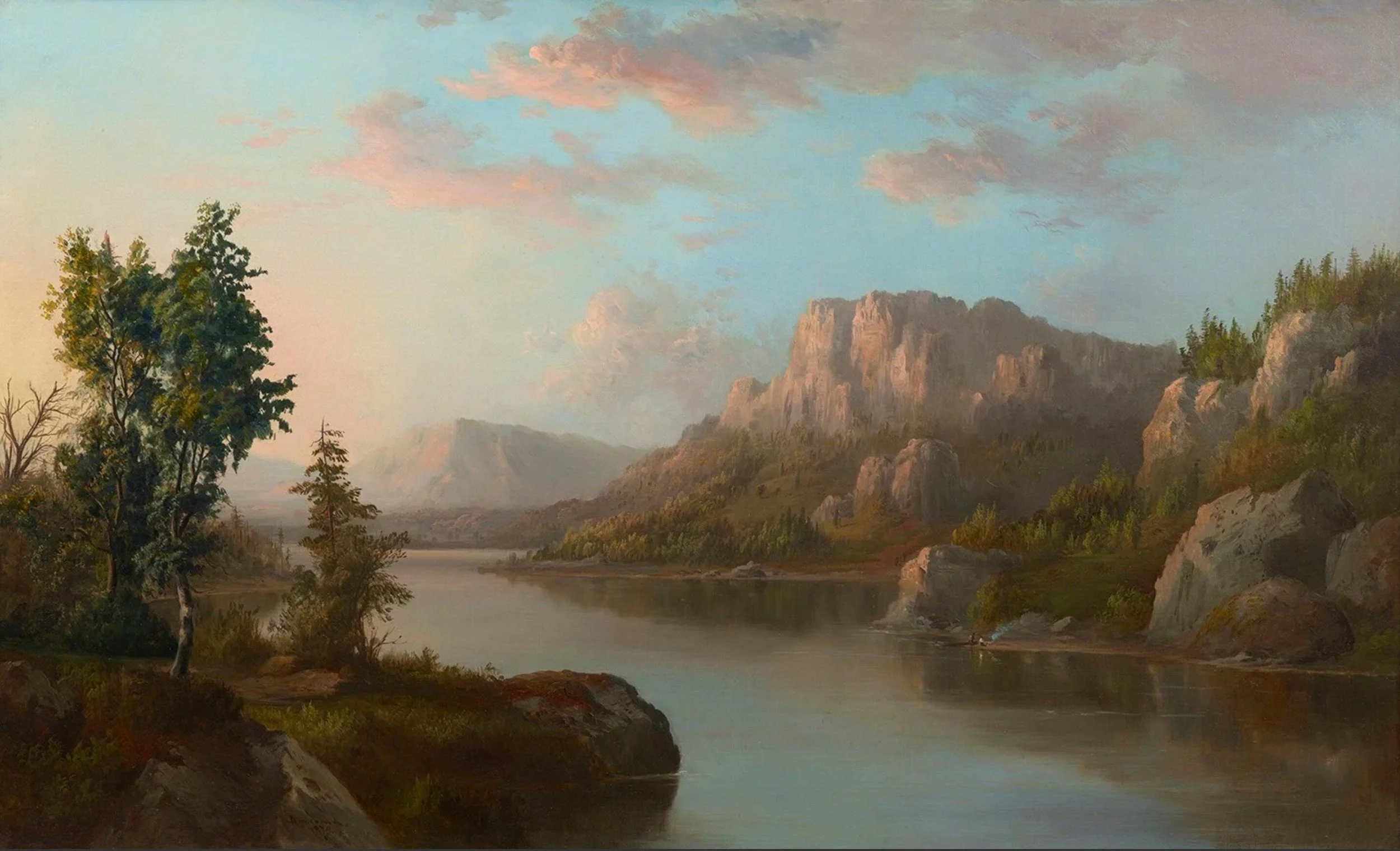Landscape painter who broke barriers
“Landscape” (oil painting, 1870), by Robert S. Duncanson, at the New Britain (Conn.) Museum of American Art.
The museum says:
“Robert S. Duncanson is considered a member of the second generation of Hudson River School painters and is celebrated for his idyllic pastoral scenes of peaceful rivers and verdant mountains. Successful during his lifetime, he was known in the 1800s by American press as the ‘best landscape painter in the West,’ and London newspapers hailed him as an equal to his British contemporaries. Born a freedman in Seneca County, N.Y., in 1821 to mixed-race parents, Duncanson moved to the prosperous city of Cincinnati in 1840 to pursue a career in the arts, and he taught himself by painting from nature and by copying reproductions of works by Hudson River School masters. In the late 1840s, he befriended local landscape painters Worthington Whittredge (1820-1910) and William Louis Sonntag (1822-1900), with whom he took numerous sketching trips, including a European Grand Tour with Sonntag in 1853. In the ensuing years, Duncanson traveled throughout North America and Europe, exhibiting and selling work with great success, despite being excluded from many of the expositions in America that his white peers could participate in. His paintings commanded up to $500 per work—a very high sum at the time. Duncanson died at 51, and while his work fell into obscurity for many decades, he is now recognized as a premier 19th-Century landscape artist, who broke barriers and paved the way for landscape painters and Black artists for generations to follow.’’
